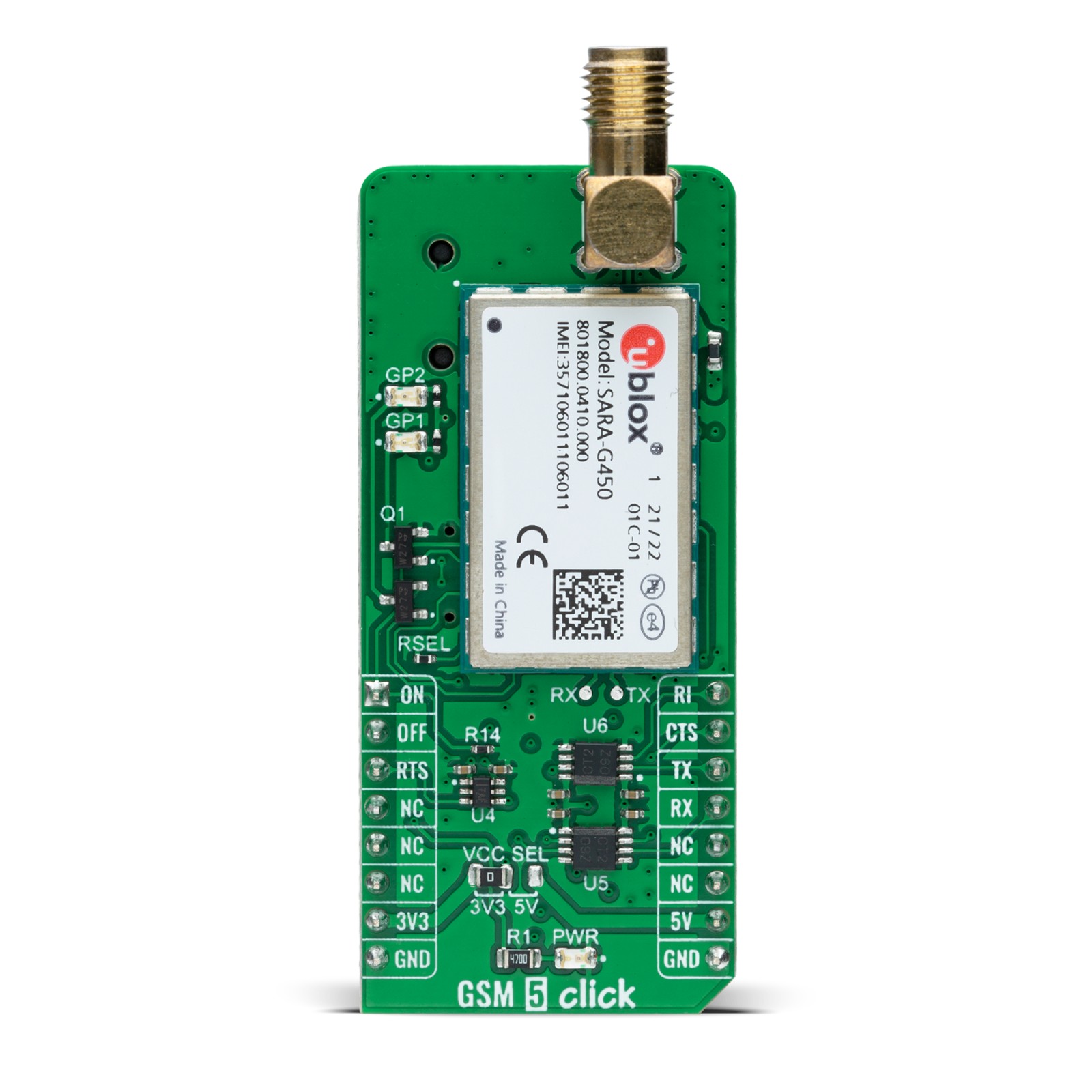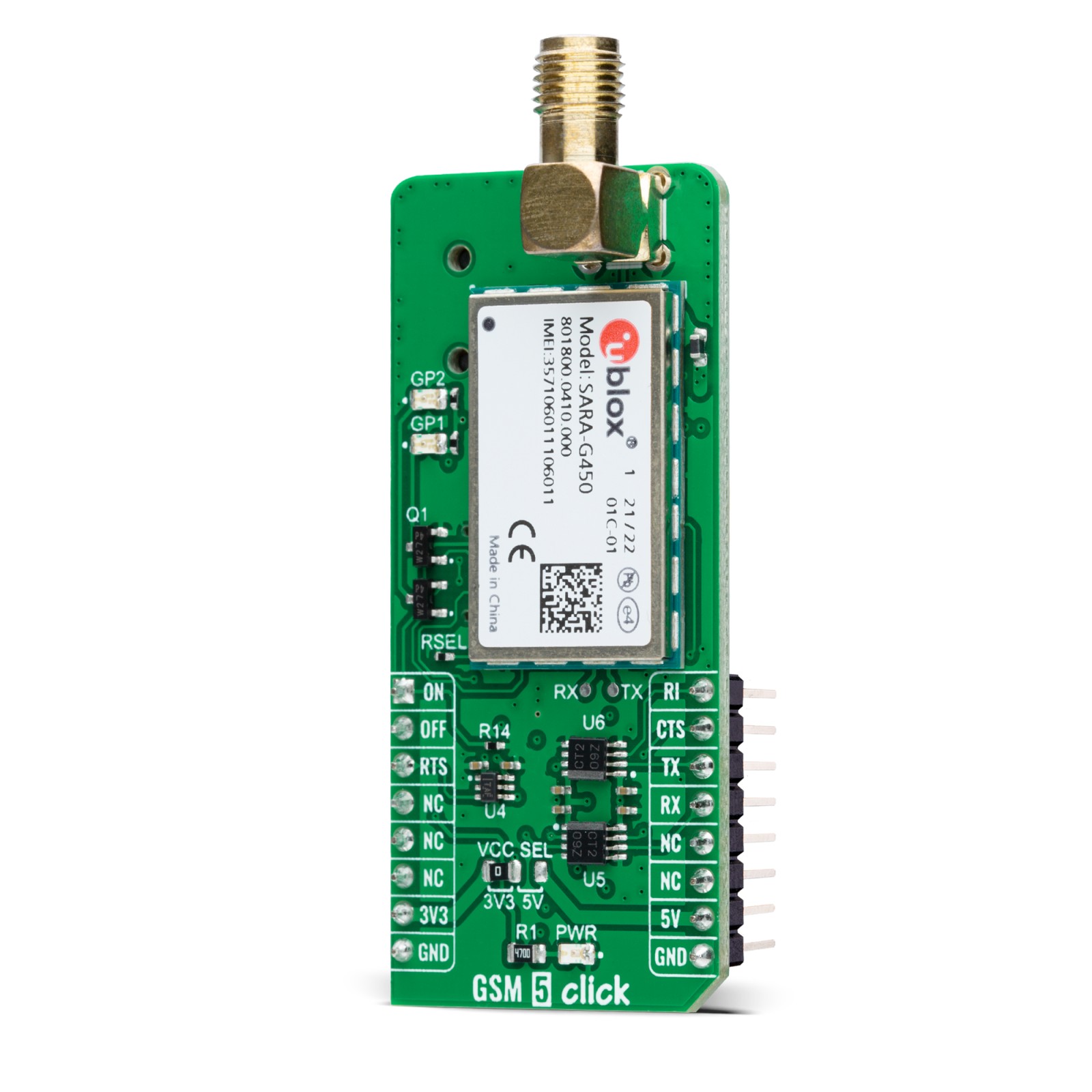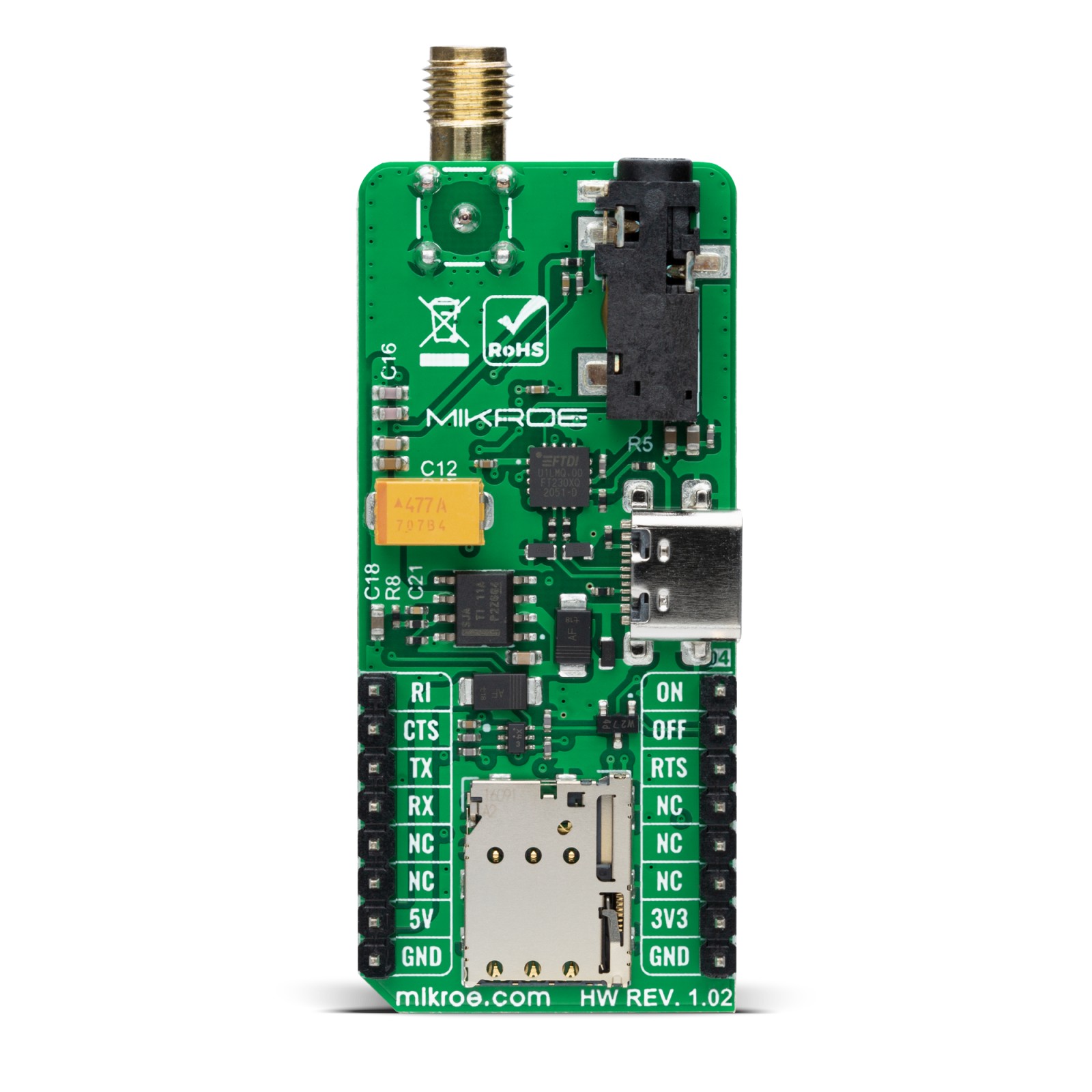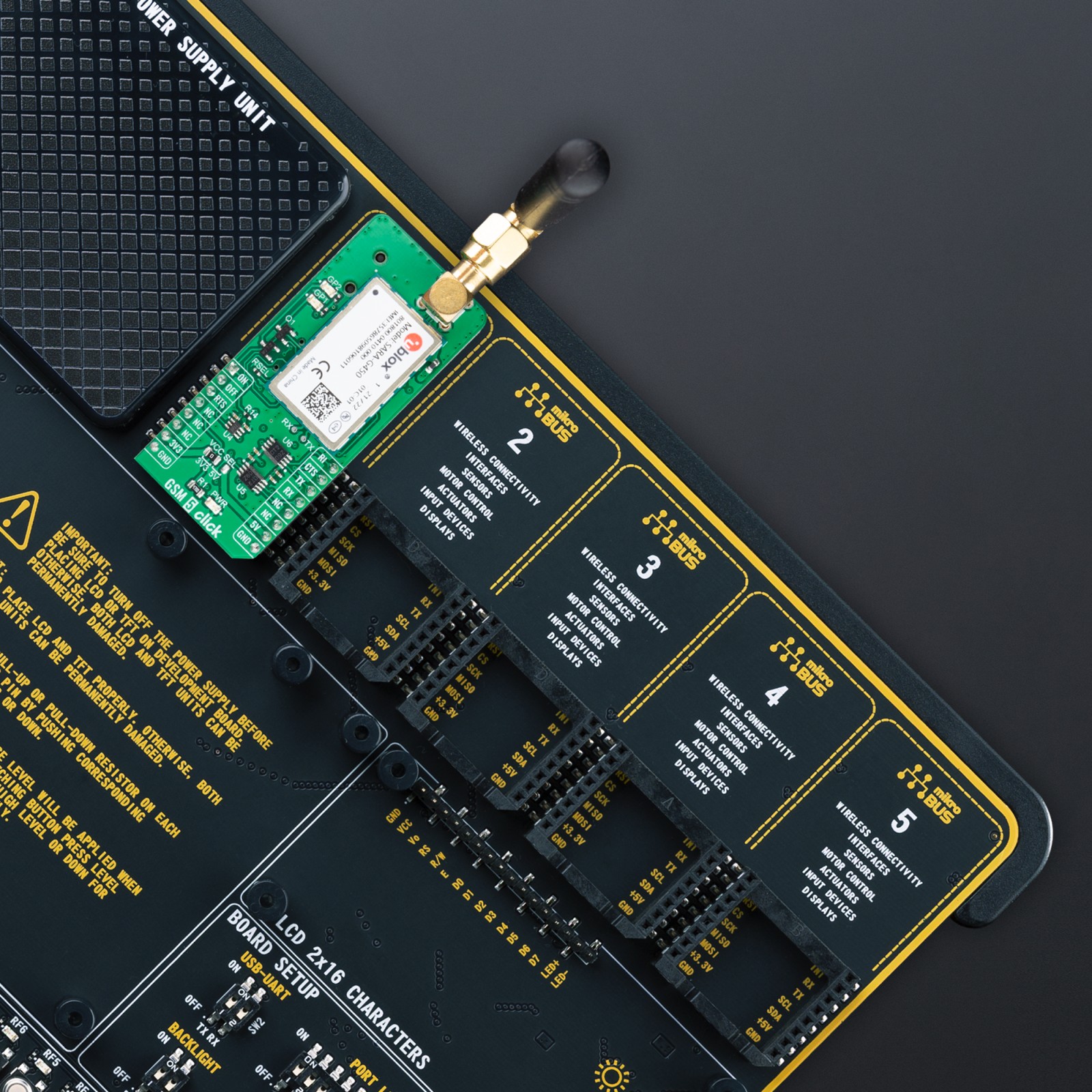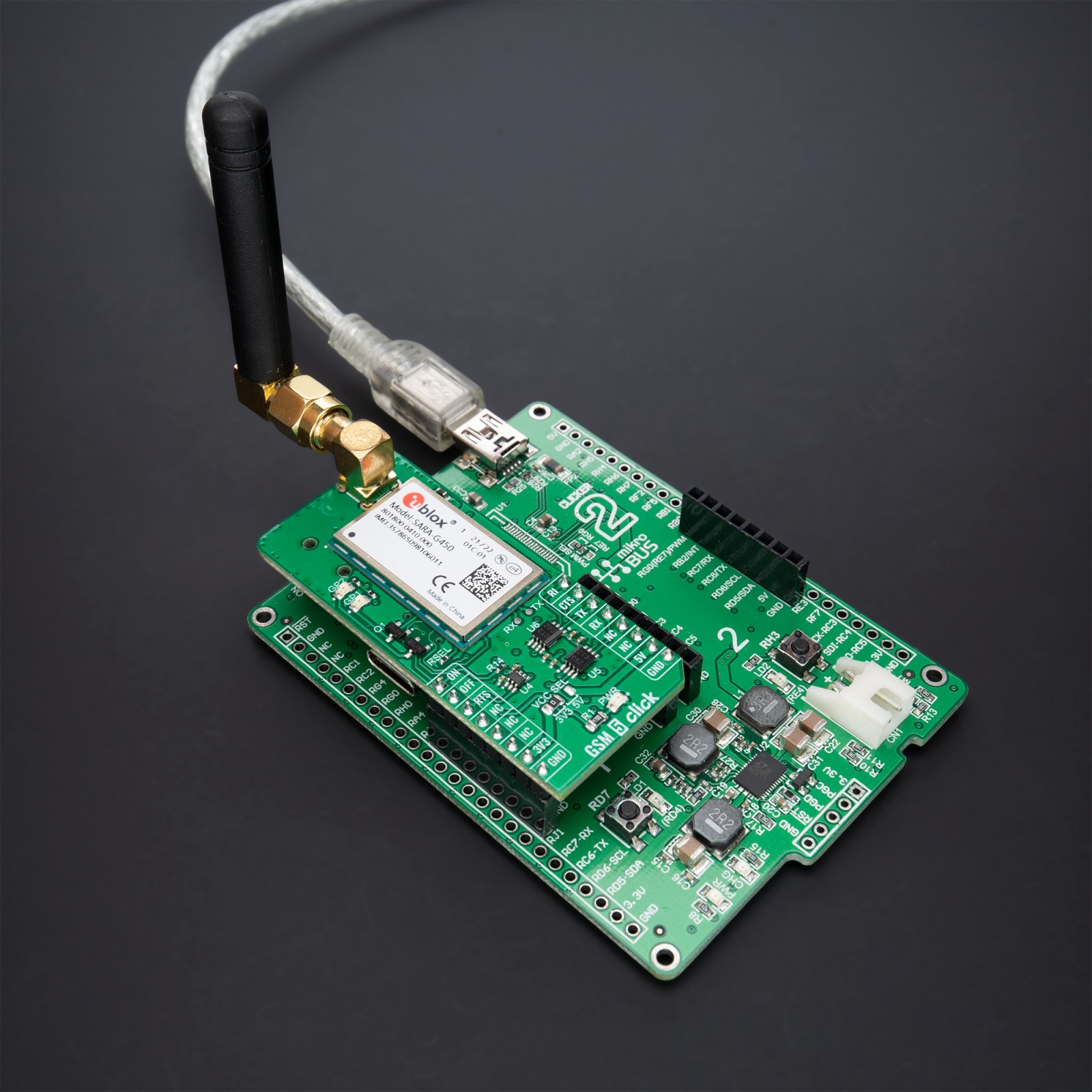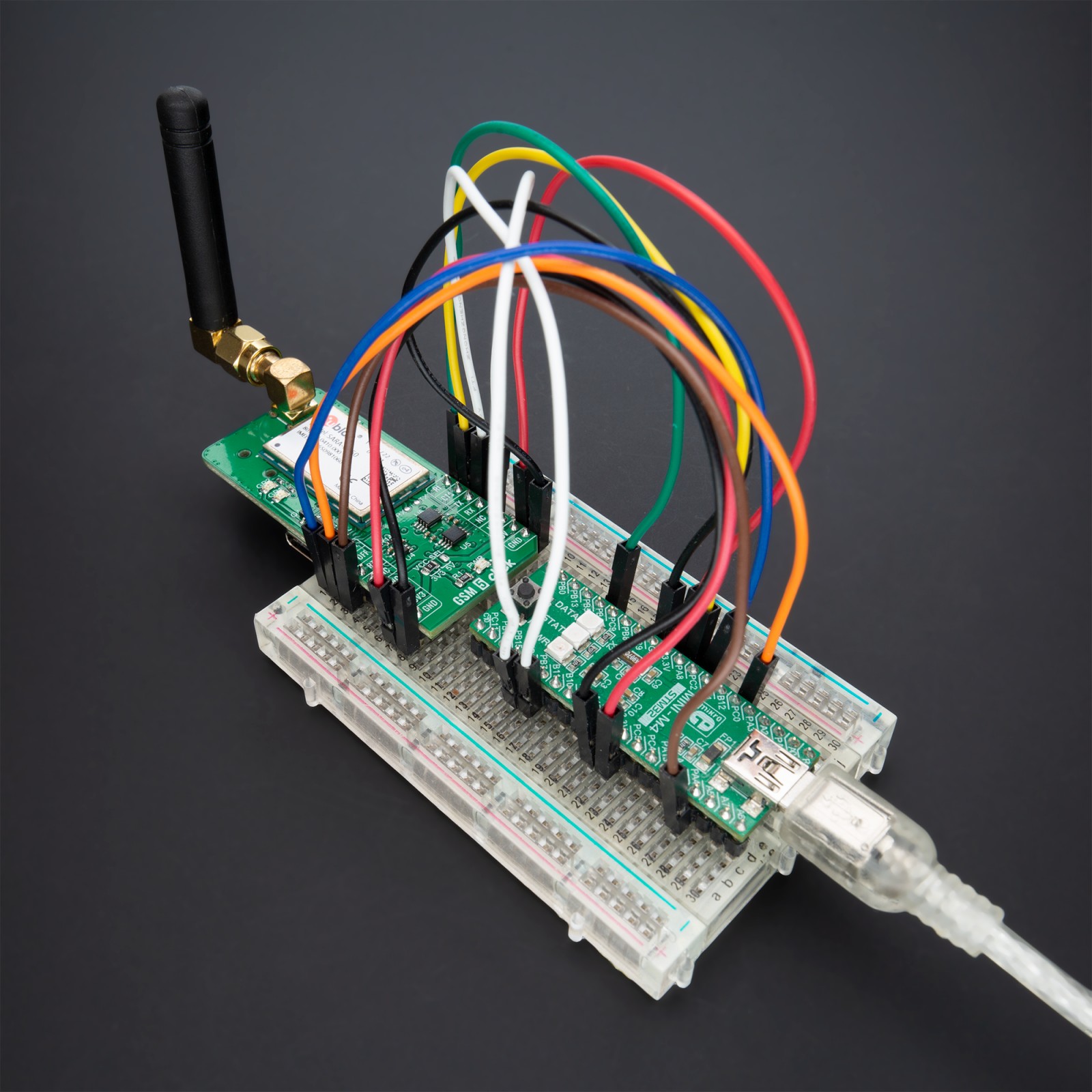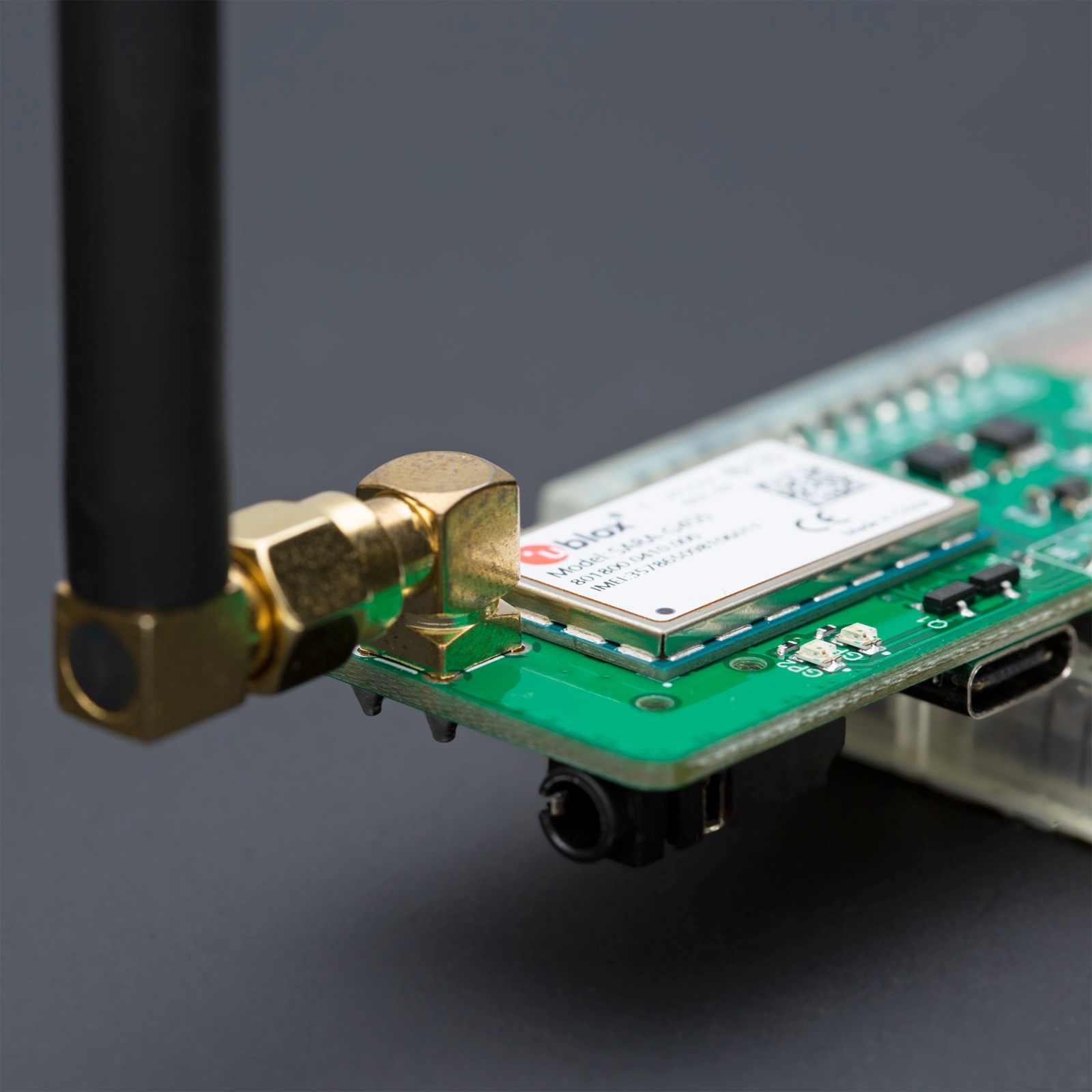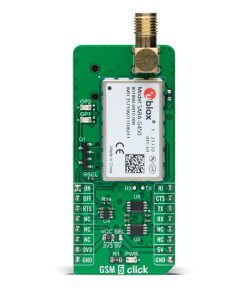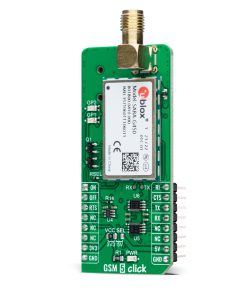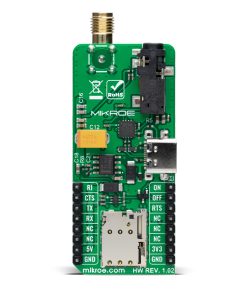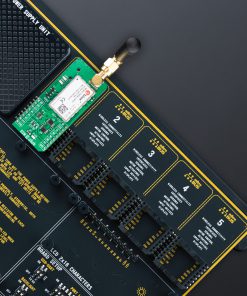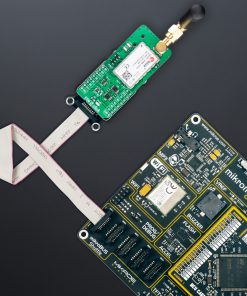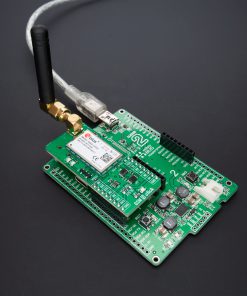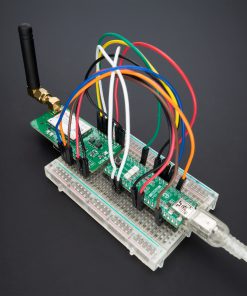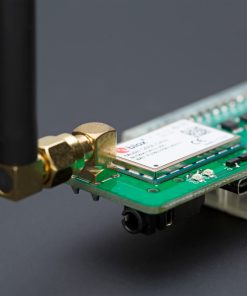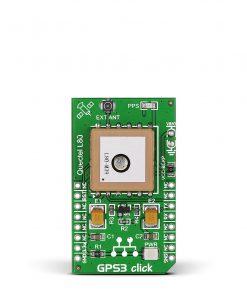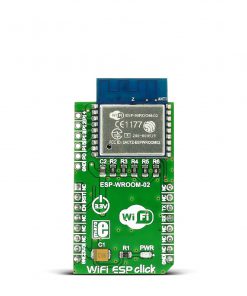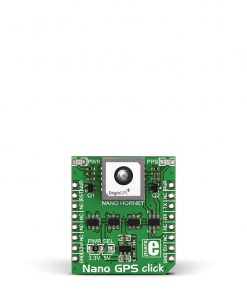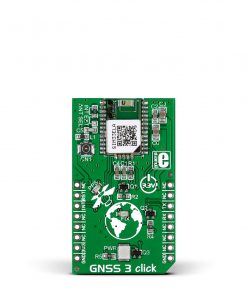Subtotal: R350.00
GSM 5 Click
R1,200.00 ex. VAT
GSM 5 Click is a compact add-on board representing a compact GSM cellular network communication solution. This board features the SARA-G450, a GSM/GPRS quad-band cellular module certified and approved by the main regulatory bodies and operators from u-blox. It features class 12 GSM/GPRS connectivity in the popular u-blox SARA form factor and comes with a comprehensive feature set, including an extensive set of internet protocols designed to provide fully integrated access to u-blox GNSS positioning with embedded A-GPS (AssistNow Online and AssistNow Offline) functionality. Besides a data rate up to 85.6 kbps and an advanced jamming detection feature, this board also offers a high-quality integrated audio interface allowing voice communication. This Click board™ is suitable for price-to-performance 2G cellular module M2M applications, such as utility metering and tracking systems.
GSM 5 Click is supported by a mikroSDK compliant library, which includes functions that simplify software development. This Click board™ comes as a fully tested product, ready to be used on a system equipped with the mikroBUS™ socket.
Stock: Lead-time applicable.
| 5+ | R1,140.00 |
| 10+ | R1,080.00 |
| 15+ | R1,020.00 |
| 20+ | R981.60 |

 Accel Click
Accel Click 